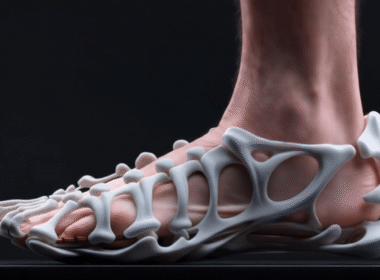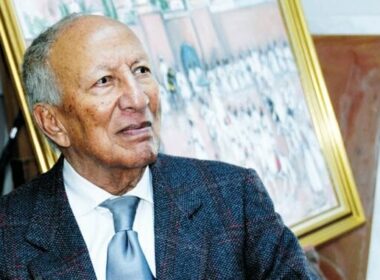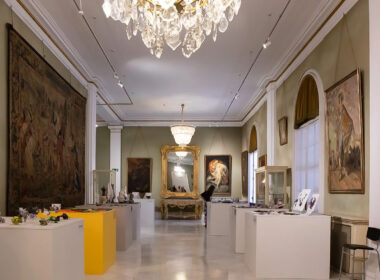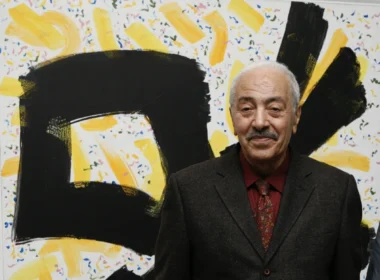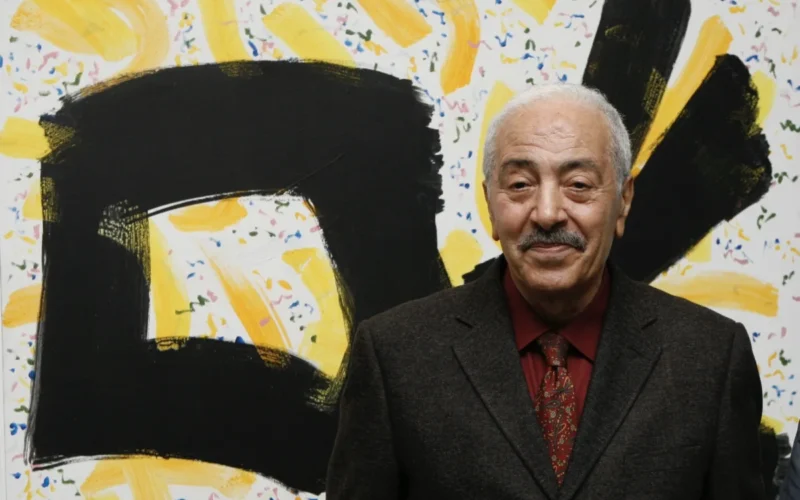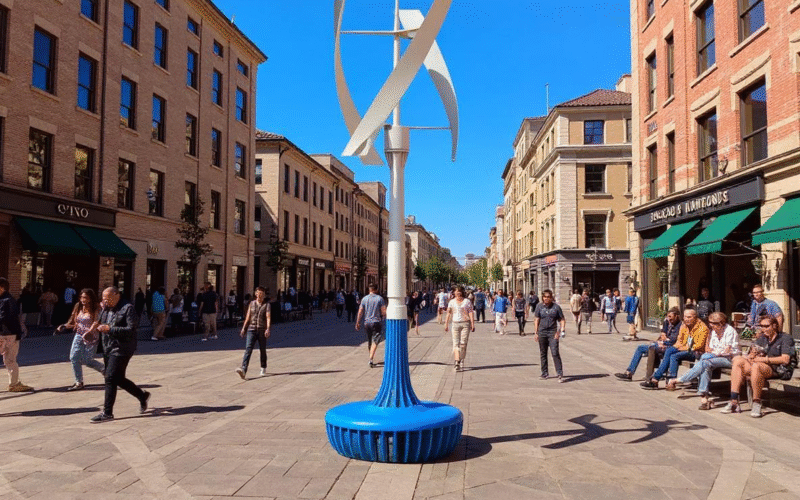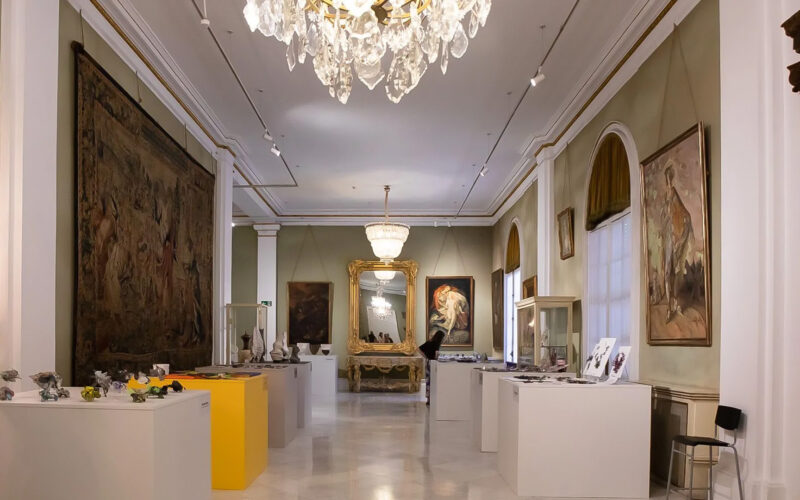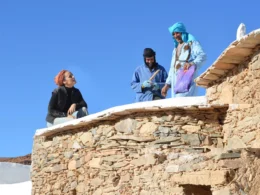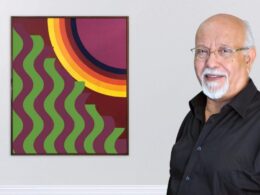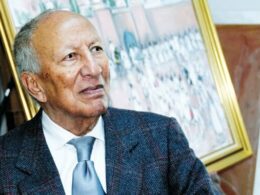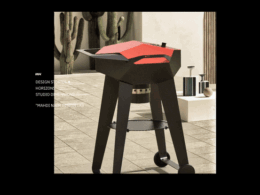In the 1960s, Morocco was alive with transformation. Independence had been won, a new cultural language was being written, and artists searched for ways to express a modern Morocco without losing the threads of tradition. Among them stood Mohamed Chabâa, painter, designer, educator, and thinker, whose vision helped redefine Moroccan art for generations to come.
Chabâa was not merely a painter; he was a bridge-builder. Between tradition and modernity, craft and fine art, local heritage and global currents, he forged a path that gave Moroccan art its own modern voice. His work, full of geometry, color, and rhythm, remains one of the most striking examples of how Morocco reimagined itself after independence.
Table of Contents
From Tangier to the World
Born in Tangier in 1935, Mohamed Chabâa grew up in a city unlike any other in Morocco. Tangier was then an international zone, cosmopolitan and complex, where cultures, languages, and ideas collided. This environment shaped his worldview: Moroccan at his core, but deeply attuned to the currents of global modernity.
His artistic journey began at the School of Fine Arts in Tetouan, where Spanish academic influence dominated. From there, he travelled to Rome, studying at the Academy of Fine Arts, and later to Hamburg, where he absorbed the Bauhaus legacy and the European avant-garde. These experiences gave him a strong foundation in modernist principles: clarity of form, abstraction, and the interplay of colour and geometry.
Yet even as he embraced modernism, Chabâa’s art remained rooted in Morocco. He sought not to imitate Europe, but to translate Morocco’s identity into a new visual language.
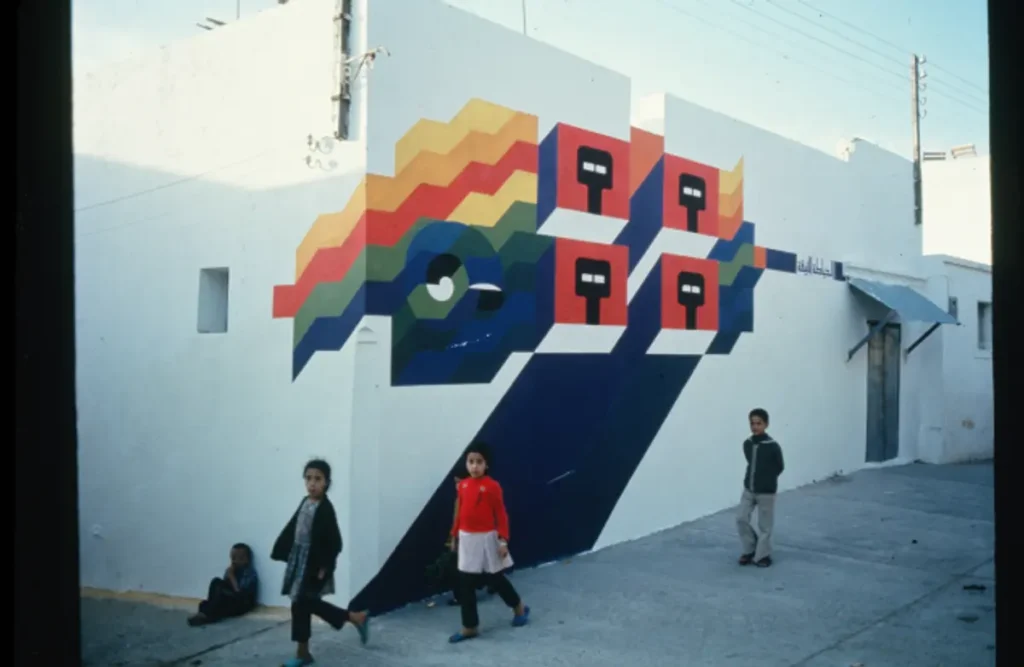
The Casablanca School and the Birth of a New Moroccan Aesthetic
In the late 1960s, Chabâa became a central figure of the Casablanca School of Art, alongside Farid Belkahia, Mohamed Melehi, and others. This movement was more than a group of artists; it was a cultural revolution. Their mission was to break away from the academic colonial art system and create a distinctly Moroccan modern art.
Together, they brought art out of galleries and into public spaces. Murals appeared on walls, posters on streets, and design infiltrated everyday life. For Chabâa, this was essential: art was not only to be admired in silence but to be lived, to shape how Moroccans saw their cities, their books, their homes.
Chabâa’s role extended beyond painting. He worked in design, typography, and book illustration, collaborating with writers and intellectuals. His geometric compositions echoed the rhythms of Islamic art; tiles, zellige, and calligraphy, yet they were reimagined through a modernist lens. In doing so, he showed that tradition was not something to be preserved in museums but a living source of creativity.
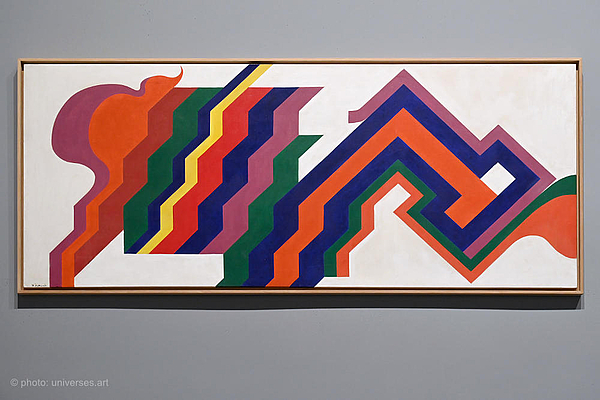
Geometry, Color, and the Language of Symbols
Mohamed Chabâa’s canvases are immediately recognizable: bold geometric shapes, vibrant colors, and balanced compositions. Circles, squares, and arcs pulse with rhythm, often recalling the patterns of Moroccan crafts or the ornamentation of Islamic architecture.
His use of colour was not decorative but symbolic. Reds, blues, and yellows carried echoes of Morocco’s landscapes: the red earth, the blue of the Mediterranean, the golden light of the desert. The interplay of colour and geometry became a metaphor for Morocco itself: unity through diversity, tradition restructured into modernity.
At times, his works feel architectural, as if they could be woven into walls, textiles, or mosaics. This was no accident. For Chabâa, the boundaries between disciplines: painting, design, craft, and architecture, were artificial. Art, he believed, should be total, integrated into life.
Teacher, Thinker, Revolutionary
Beyond his art, Chabâa was an influential teacher and intellectual. At the Casablanca School of Fine Arts, he and his colleagues reshaped the curriculum, introducing modernist ideas while grounding them in Moroccan heritage. Students were encouraged to study local crafts, popular traditions, and design alongside painting and sculpture.
This educational vision was revolutionary. It treated Moroccan heritage not as folklore but as a foundation for modern creativity. It gave a new generation of artists the confidence to create without abandoning their cultural roots.
Chabâa also wrote extensively on art and design, articulating a philosophy that blended practice with theory. For him, art was inseparable from identity, politics, and society. To paint was not only to create beauty but to participate in Morocco’s ongoing project of cultural independence.
Legacy and Influence
Mohamed Chabâa’s influence can still be felt today. His works are preserved in major collections, from Morocco’s national museums to international exhibitions. More importantly, his ideas continue to shape Moroccan visual culture; in design, in public art, and in the way Moroccan modernism is understood.
The Casablanca School, once a radical movement, is now recognized as the foundation of contemporary Moroccan art. Its members, Chabâa included, are celebrated for showing that Morocco’s path to modernity could be unique, rooted in its crafts, colors, and traditions rather than imposed from outside.
When Chabâa passed away in 2013, he left behind more than canvases. He left a vision: that Moroccan art can be both modern and deeply Moroccan, both global and local, both intellectual and popular.
Why We Remember Chabâa Today
In today’s Morocco, where young artists navigate between global influences and local heritage, Chabâa’s work remains strikingly relevant. His geometric forms still speak of balance and unity, his colors still echo Morocco’s landscapes, and his philosophy still challenges us: how do we modernize without losing our essence?
Looking at his canvases is like listening to Morocco’s heartbeat, measured in rhythm and form. They remind us that art is not only about representation but about reimagination. That identity is not static, but something to be continuously shaped.
Conclusion: The Geometry of Heritage
Mohamed Chabâa was more than a painter. He was a builder of visions, a designer of modern Morocco’s cultural identity. His art, disciplined yet lyrical, abstract yet profoundly Moroccan, showed that geometry and color could carry memory, meaning, and belonging.
In every line, every circle, every carefully measured composition, Chabâa wove together past and future. His legacy endures not only in museums but in the way Morocco sees itself: proud of its traditions, confident in its modernity, and ready to carry both into the future.
Mohamed Chabâa did not just paint Morocco. He designed its modern soul.


